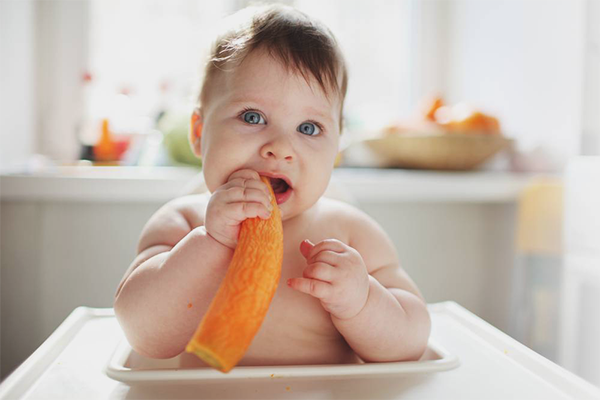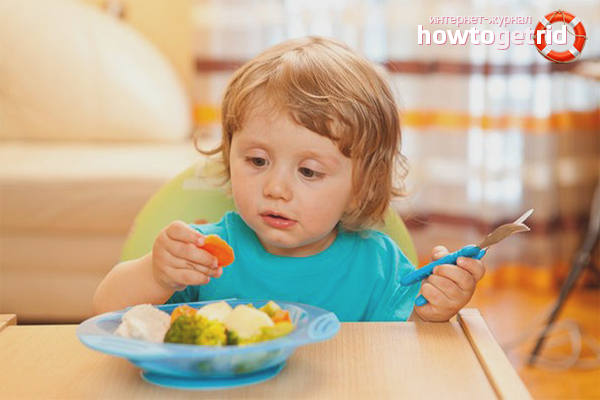The content of the article
Parents do their best to teach the child various skills as early as possible. But, despite all their pedagogical abilities, patience and perseverance, kids can stubbornly refuse to perform certain actions. It is especially offensive to watch when a child does not want or cannot eat solid food. Instead of pieces of food, he gladly consumes puree food. What to do with it? How to teach a child to chew?
When can I turn to solid food
From the first months of feeding a child, he should receive only pureed and homogeneous purees. This is due to the immaturity of the digestive system, as well as the banal absence of teeth. Up to half a year, a pushing reflex is developed in children, which saves a child from hard objects in his mouth. Introducing complementary foods earlier than six months is not worth it,he just pushes the food out, it can even go so far as vomiting.
Over time, the baby begins to try harder pieces. This is due to teething and the desire to scratch the gums. It is very important to be careful and attentive. Giving the child a crust of bread or cookies is dangerous - the baby can choke on a hard piece.
How to understand that the child is ready to chew solid food? Here are some good examples.
- If you notice that the baby is looking at your plate with interest, trying to take pieces from it, is interested in "adult" food.
- If a child puts a spoon in his mouth and it does not cause him to gag reflex.
- The baby is ready for “slices” if he doesn’t suck mashed potatoes during feeding, but as if he removes it with his upper lip.
These simple signals indicate that the child is ready for solid food. Usually, schooling to eat slices begins at 8-9 months. Giving solid foods to a child is dangerous before. When feeding with solid food, someone must be near, it is impossible to leave the child even in the next room.
How to teach a child to solid food
There are many tips and rules that will help you quickly and safely teach your baby to eat pieces.
- If the child eats puree food, you should try to slowly walk away from it.At 6 months, you must use a blender to grind soups and vegetables, and then carefully pass the food through a strainer. This will allow you to eliminate the presence of lumps in food. Over time, after a couple of months, the food should not be strictly homogenized. Now, instead of a blender, try to use a double skipping food through a meat grinder. When the baby gets used to this, grate the food grated - first small, and then large. After a year, the baby can be taught to more solid food - do not use a blender, just mash the cooking of vegetables with a fork. Thus, the baby will get small pieces that can be chewed at his age.
- While the child is not ready to eat fruits and vegetables entirely, you can use a modern gadget called Nibler. It is a small net bag attached to the handle. Baby, even with all the work, will not be able to open this bag - safety is guaranteed. With the help of special manipulations, parents put pieces of fruit and vegetables in this bag and tightly close the design. This is a great device. First, the child learns to bite through whole pieces of fruit through a strainer.Secondly, there is no more pieces in the mouth than a cell of this strainer, which means that the child will not choke. Thirdly, the baby gets a fresh product - namely, juice and microscopic pieces of fresh fruit. As a rule, kids love to eat favorite treats through Niebler.
- For young children on sale there is a special cookie, which immediately dissolves at the slightest moisture on it. This is done so that the baby does not choke when a piece of such cookies gets into his mouth. It instantly becomes soft and very easy to eat.
- Semolina porridge can be given to the child without additional grinding. But buckwheat, rice and oatmeal should be processed with a blender. Over time, try to do this as little as possible so that the child has small pieces on the plate. You can initially use crushed small rice for cooking - its pieces are so small that they can be chewed with success by your child.
- Begin to teach the child to solid food with very soft foods that melt when it enters the mouth. This may be boiled carrots, banana, pear, peach, soft pasta. These products need to be cut into small cubes and just put on a plate in front of the baby. He will take what he needs.
- So that the child has an incentive to chew, offer him those products that he likes most. Noticed that the crumb with pleasure eats pumpkin puree - slice boiled pumpkin on a plate. This will cause the child pleasant emotions associated with the process of chewing.
Remember, the transition to solid food should be phased. After all, the child's stomach is not ready for a sharp change in diet. Offer your baby a boiled carrot today for afternoon tea, and if he likes it, offer it tomorrow. Patience and consistency are the main conditions for a successful transition to solid food.
What to do if the child does not want to eat solid food
It often happens that the baby agrees to eat only food in the form of mashed potatoes. It becomes especially alarming when a child is already one and a half years old, but he is not going to change his habits.
Often this is accompanied by such a picture - the child eats banana, apple, cookies and bread with pleasure, but does not want soup and porridge. If this is a portrait of your child, pay attention to the number of teeth of your baby. Sometimes a child grows up late and an elementary child has nothing to chew on.You can eat solid food only with at least eight teeth.
If the child refuses hard bits, try to treat him with sticky and thick foods. It can be jelly, cottage cheese diluted with kefir, yogurt, cream cheese.
Sometimes a categorical rejection of solid food can be pedagogical in nature. Our mothers did not have such a problem as the inability to teach a child to solid food. The fact is that at that time there were no blenders available in every family. Therefore, young mothers chopped cooked food on their own. This, of course, explained the presence of small pieces in the child's food. Modern conditions of a comfortable life allow us to turn soup, porridge and other products into the smallest mashed potatoes in a second, without a hint of a single piece of solid food.
Sometimes mothers say, "Just to eat, at least in what form," and continue to feed the child with puree food. Over time, the child does not recognize the pieces, his body pushes away everything except the puree-shaped form of food. In this case, you need to creak the heart to throw the blender away and chop the child food with a fork. But only if the child by the age of one and a half has not got the desire to eat solid pieces. And nothing, if the baby refuses such food - do not cause panic.After a couple of hours, hunger will force the child to take any food, all you need is patience.
To baby eat cooked food pieces, you need to give him a variety. Offer different fruits and vegetables, use in the preparation of vegetable and butter, do not forget about the greens. And then you will have no problems with feeding and eating hard pieces.
Video: how to teach a child to chew solid food












To send